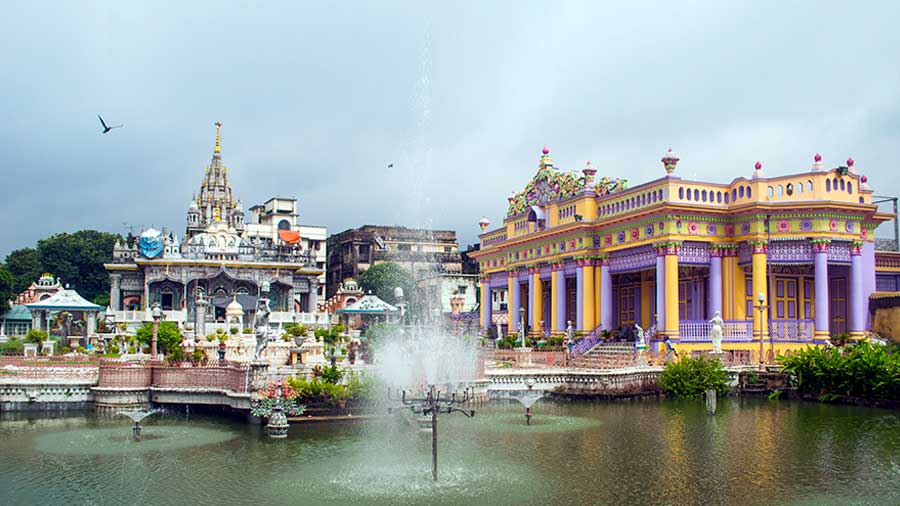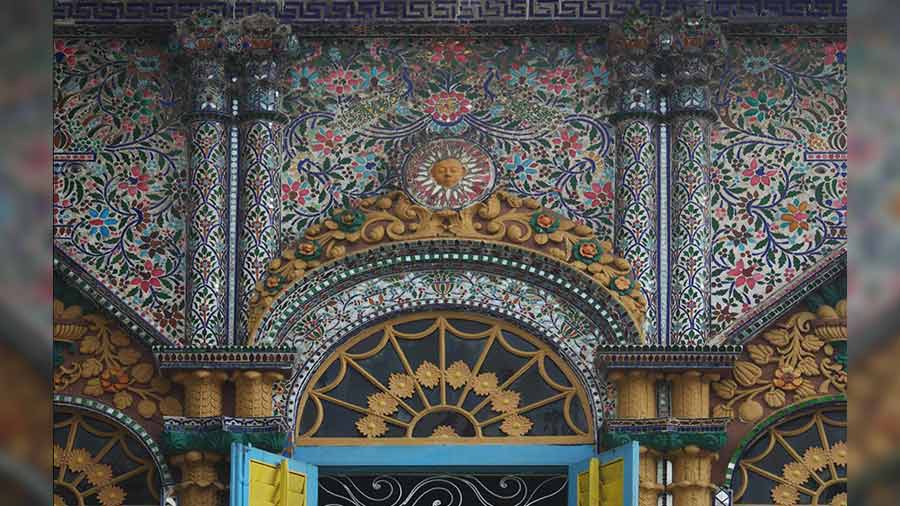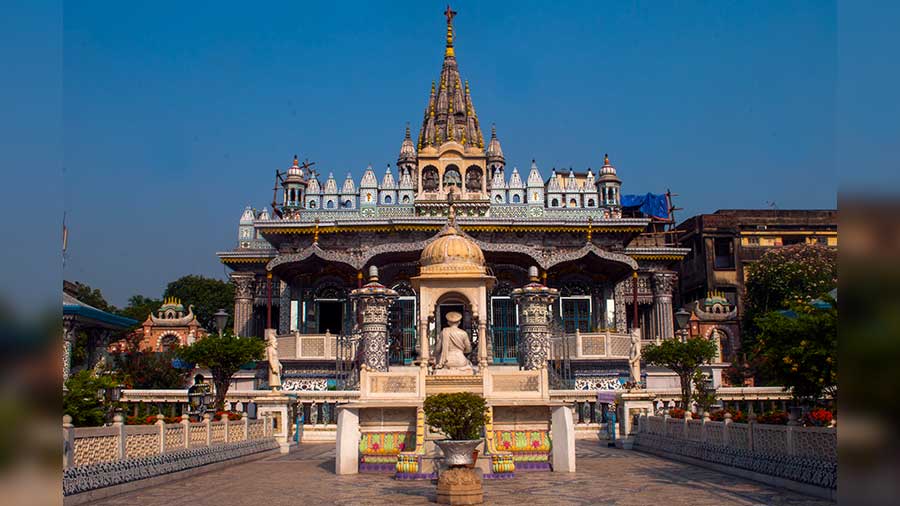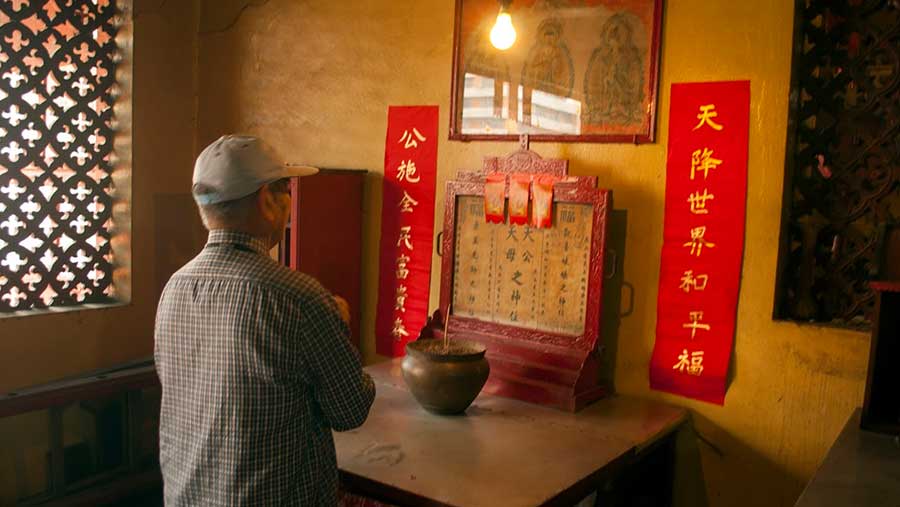Amid the hubbub of north Kolkata, is a pocket of tranquillity housed in Gouribari, near Maniktala, for years. The Calcutta Jain Temple, or Shwetambar Jain Temple, often referred to as the Pareshnath Temple, is an oasis of peace and a part of the city’s multicultural history.
Kolkata has always been an important business centre, attracting traders from far and wide. Among the many that made the journey to Calcutta were the Marwari and Gujarati traders. They made Calcutta their home, and as their businesses flourished, their families joined them. Many of the migrants who settled in the city were Jains, and that led to the building of Jain places of worship around the city. Today, Kolkata has over half a dozen Jain temples. Unfortunately most of them prohibit the entry of non-Jains, but the biggest and grandest of them all — the Pareshnath Temple — has no such restrictions.

The main temple complex has the Sitalnath shrine and a large waterbody with fountains
Three of the four temples spread over three complexes are dedicated to Sitalnath, the 10th tirthankara; Chandraprabha, the eighth tirthankara; Mahavira, the 24th tirthankara. The fourth, known as Dadabari, contains the footprint of Jain saint Jin Dutt Kushal Suri.
The main complex, which dates back to 1867, has the shrine of Sitalnath. The temple was founded by Rai Badridas Bahadur Mookim, a prominent Jain social leader. A grand gateway welcomes devotees and visitors into a sprawling complex with paved pathways meandering through landscaped gardens with decorated flower beds and marble fountains.

Dadabari (centre) and the Mahavira Temple (right)
There is a large pond where devotees feed the fish every morning and a central fountain within the complex. The compound also has a marble fountain along with a statue of Rai Badridas Bahadur facing the main temple. The main temple features stunning glass and mosaic work, depicting floral and geometric motifs along with human and animal figures. The richly decorated interiors have glass walls and beautiful chandeliers. Inside the temple is a lamp, which has been burning since the foundation of the temple in 1867.

Mosaic work at Sitalnath Temple complex
South of the Sitalnath complex is another complex housing the shrine of Chandraprabha, built in 1895. The third and the final complex is located east of the Sitalnath complex and houses the footprint of Jain saint Jin Dutt Kushal Suri along with a temple dedicated to Mahavira. A black-and-white marble pathway leads to the small, elegant domed building that houses the shrine with the footprint. Like the Sitalnath complex, this one also has a large waterbody with a fountain, but the temple does not have the intricate glass and mosaic work seen in the main temple. The shrine of Mahavira is housed in a temple topped with a spire and is approachable by a long flight of stairs.

The Chandraprabha Temple
Temple details:
- Timings: 6am-11am and 3pm-7 pm
- Photography is allowed on the premises, except for temple interiors
- No entry fee
Rangan Datta is a mathematics and management teacher by profession and a travel writer and photographer by passion. He has been addicted to discovering off-beat places since his undergraduate days at St. Xavier's College. Blogging and contributing to Wikipedia are his other passions.


